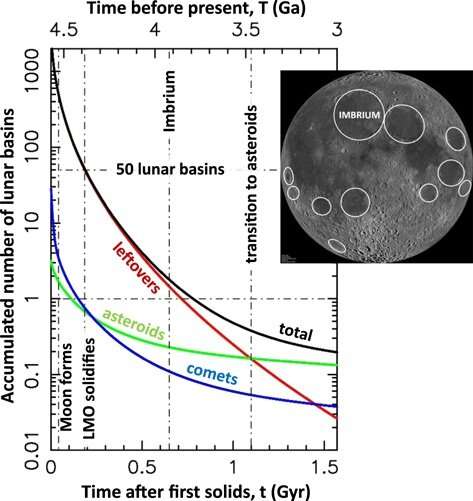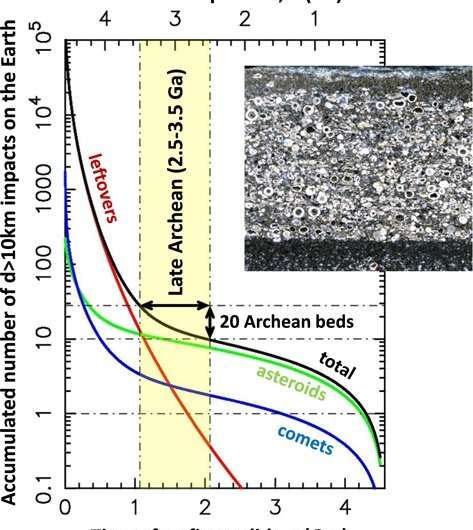Scientists concluded that the largest impact basins on the Moon were formed as a result of collisions not with asteroids, but with planetesimals. This is the name of the bodies that existed at the beginning of the Solar System, from which planets were then formed.

Impact basins on the Moon
The Moon is covered with craters from collisions with celestial bodies. The largest of them have a more complex structure and sometimes do not look at all like the usual “pits”. They are called impact basins. Some of them are filled with darker basalt lava and these are what we call lunar seas.
At the same time, part of the shock basins remained unnoticed. In particular, this also applies to the largest collision trace on the Moon — the Aitken basin, which has a diameter of almost 2500 km. The fact is that the magma filling did not occur immediately, but after something big crashed into the moon of our planet from the other side and caused a shock wave in its depths.
At the same time, it is quite possible that some of the biggest impacts do not leave any traces at all on the surface of the Moon. The fact is that for the first 200 million years its surface was an ocean of molten magma, so there were simply no craters left.
Asteroids or planetesimals?
Traditionally, it is believed that asteroids flying from the Main Belt are responsible for the formation of the largest impact craters on the surface of the Moon. However, in a new study, scientists analyzed the possible composition, direction and speed of the bodies that led to their formation and concluded that they were actually planetesimals that were located at a distance of 0.5-1.5 AU from the Sun.

Planetesimals are loose bodies without differentiation of the subsurface with a diameter of one to several tens of kilometers. They were formed at the beginning of the existence of the Solar System, and then most of them merged into planets. However, a significant number of them continued to circle in space for hundreds of millions of years.
A new study showed that most of the large impact craters on the surface of the Moon were formed precisely as a result of collisions with planetesimals and only later collisions began to occur with asteroids of the Main Belt.
Hidden traces of collisions
In addition, scientists have built a collision model, according to which we simply do not see most of the collisions of planetesimals with the Moon. According to it, even during the existence of magma on the surface of the ocean, about 500 planetesimals with a diameter of more than 20 km crashed into our moon. At the same time, there are only 50 visible large basins on its surface.
In general, the model showed that collisions with planetesimals were commonplace during the first hundreds of millions of years, but stopped completely about 3 billion years ago. And this means that they should also encounter the Earth quite often.

The model shows that about 10 planetesimals should have crashed into our planet between 2.5 and 3.5 billion years ago. Their hits caused an eruption of matter deposited in the form of small granules, called spherules, covering the surface of the planet with whole fields.
And the number of fields of spherules now known to scientists roughly corresponds to the one provided for in this model. This indicates that it is generally correct, and the number of collisions with large bodies in the first billions of years really exceeded what was observed after that.
According to phys.org
Follow us on Twitter to get the most interesting space news in time
https://twitter.com/ust_magazine

